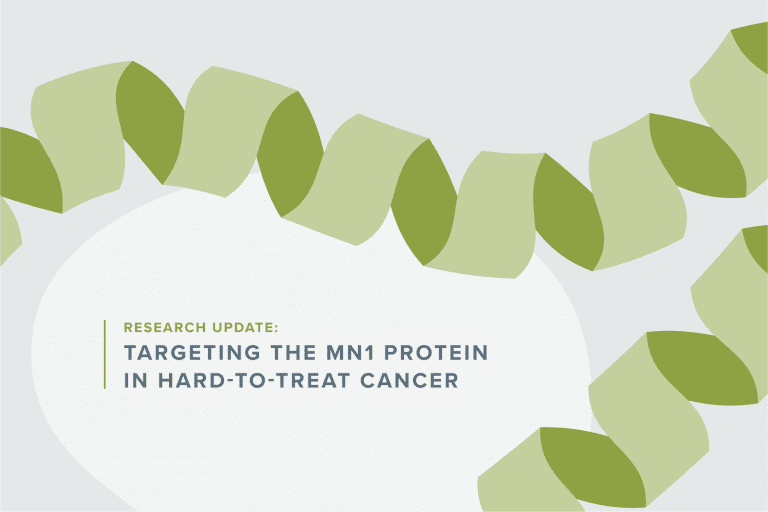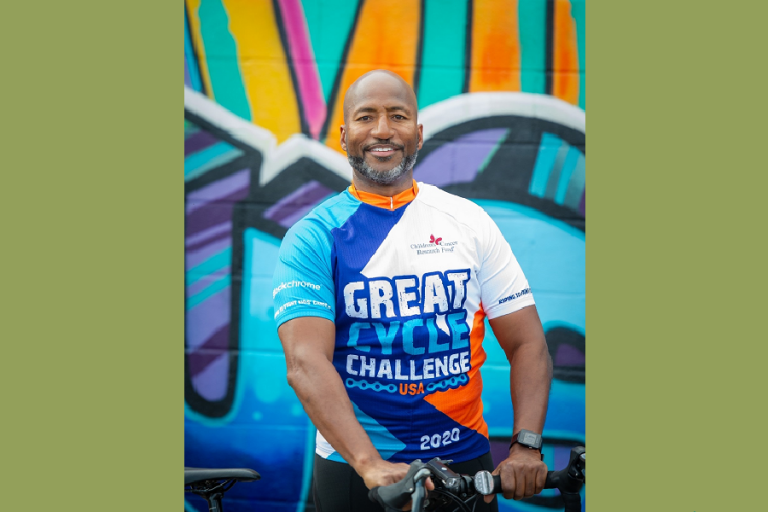“I begged for Megan to come in every day,” Alex told us, with his sister Kirsten and mother Nancy nearby.
While most of his friends are headed off to college, Alex is fighting his latest post-stem cell transplant symptom: a knocked-down immune system and painful shingles that spread over his back, abdomen, head, face and mouth — one of the worst cases his care team has ever seen. An 18-year-old non-Hodgkin lymphoma survivor, Alex has had to overcome many other complications.
He almost lost his life last fall after the transplant, leaving his family terrified. “I don’t think we were ever prepared for what we went through,” said Kirsten. First diagnosed with cancer in October 2014, Alex has relapsed twice with two different types of non-Hodgkin lymphoma and has contracted graft-versus-host disease. With that came a slew of painful and exhausting symptoms — so much so that he doesn’t remember whole chapters of his recovery process and relies on his sister, Kirsten, for the chronological details.
On the bone and marrow transplant floor, Alex met Megan Voss and Greta Yates, MA, MT-BC and a music therapist. Alex said integrative therapies have been a huge help in managing his pain and neuropathy.
“My hands and feet would just sting. With [Megan], it would hurt much less,” Alex said. She would massage his hands and feet with essential oils, helping him manage the stinging in his feet. She also taught him how to use Epsom salt in his baths to help with bone achiness. “I live in the bathtub with Epsom salt,” Alex said. “I do it every day, sometimes two or three times a day.” Once, Nancy found Alex asleep and snoring in the bathtub because he was so relaxed. “We have 15.5-gallon containers in the garage full of Epsom now,” said Nancy. The baths also help Alex manage the pain from the shingles.
Additionally, Voss showed Alex how to use essential oils on his joints — a technique that came in handy when he was learning how to walk again post-transplant. His joints would lock painfully, and the oils would help ease the discomfort.
This school year, Alex is continuing chemotherapy and is on steroids to fight graft-versus-host disease.
He has three classes left before graduation and will be Skyping into the classroom for his lessons. What he misses most is being with his friends and being included when his friends go out. “My friends say, ‘Oh, I didn’t think you could go do that,’ after they do it,” says Alex. For a guy who loves fishing, hunting and anything outdoors, this has been especially difficult.
“I admire his strength,” said Kirsten. “He’s never had a pity party or used the cancer card. He’s been through hell, and I’m just really grateful he’s here.”
For Alex, integrative therapy was vital to his healing. Voss and the integrative therapy team have seen many successes in healing like what Alex experienced, especially on the blood and marrow transplant floor.
Next, the integrative therapy team is initiating studies that demonstrate the efficacy of integrative therapies.
“The more the practitioner explores this side of medicine, the better a doctor, nurse, social worker, pharmacist or any other kind of provider you will become,” said John Wagner, MD, of the University of Minnesota Masonic Children’s Hospital and Children’s Cancer Research Fund Co-Chief Medical Advisor.
Thank you for helping us fund the integrative therapy program. Your donations are making a difference for kids like Alex.
Learn more about the amazing work you’re funding in Integrative Therapies and other research in our Annual Report.
Want to read more about Alex? Check out this photo essay.




